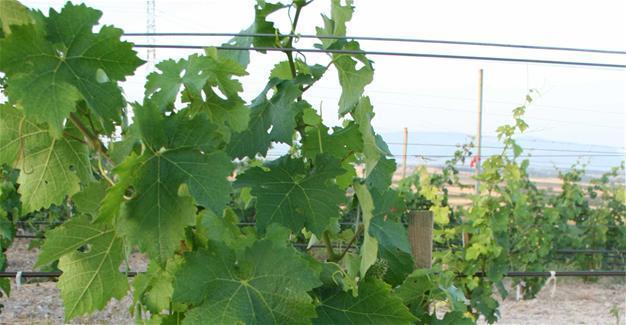Beyond the bottle
Aylin Öney Tan-aylinoneytan@yahoo.com
 Years ago, during the harvest season, I was strolling in the streets of Kalecik, a small town close to Ankara, when I noticed a strange handwritten note on a box of grapes for sale. It wrote “şişe kaçkını,” with a rough translation meaning “escaped from the bottle.” Of course I said to myself, just the right wording; these were the grapes that were not good enough for the bottle. After all we were in the town that gave its name to the now infamous indigenous grape variety named Kalecik Karası, a favorite of many wine producers.
Years ago, during the harvest season, I was strolling in the streets of Kalecik, a small town close to Ankara, when I noticed a strange handwritten note on a box of grapes for sale. It wrote “şişe kaçkını,” with a rough translation meaning “escaped from the bottle.” Of course I said to myself, just the right wording; these were the grapes that were not good enough for the bottle. After all we were in the town that gave its name to the now infamous indigenous grape variety named Kalecik Karası, a favorite of many wine producers. Turkey is a country that has a strange relationship with grapes. First of all, grapes for many are the ultimate fruit. When fully ripe, they adorn the late summer tables with grace and often chilled to give off a cloudy frost before devoured by the bunch. The reality is that most of the grapes grown in Turkey end on tables, not in bottles. Turkey must be the biggest consumer of grapes as a fruit, and if not eaten fresh, most grapes are either dried or turned into pekmez – grape molasses. There are countless ways of preserving grape juice in the most unusual ways; boiled-down reduced grape juice is turned into fruit leathers and sweetmeats enjoyed in wintertime as a nibbling snack. Sucuk is the generic name given to dry sausages in Anatolia, but it is also the name given to a wonderful sweet innovation, threaded walnuts encased in grape juice jelly. Made in the fashion like making candles, dipped several times in thickened grape juice, these long sweet sausages are crazily tasty. In many cases the grape is further thickened with starch to create another sweet delight that is cut into bite-sized pieces. The more rural and archaic ones are thickened with finely ground bulgur or semolina as a rougher form of starch, and poured into wooden trays to solidify; when dry, they are cut into cubes. Actually, according to my theory, these grape juice-based sweetmeats are actually the ancestors of Turkish Delight.
We are talking about a land that is home to grape culture. Together with Georgia, Armenia and Iran, Anatolia is where viticulture was already prevalent in the Bronze Age. Hittites had laws on vineyards, perhaps the only of their kind in history. The Neo-Hittite İvriz stone engravings depict gods and kings holding bunches of grapes. Surely grapes were not only meant for the table, or more correctly just to eat; grapes were of course used to make wine, or even more widely, distilled to make rakı, the ultimate grape distillation which is the anise-scented national spirit of Turkey.
But still, the dominance of vineyard products on the table, or the culinary aspects of viticulture beyond the bottle, are little known. Here people have zillions of ways to use vine leaves in cooking; the hot and cold versions of sarma (meaning wrapped or rolled), wrapped either with meat or rice fillings. The latter was a Lenten dish of the Christian communities of Anatolia, and thus called yalancı dolma, meaning fake dolma, as it is meatless, not the real thing. Numerous examples abound, including breads baked in vine leaves, or hot dishes making use of vine leaves and the like. Actually, picking grape leaves is such a craze that it has become a nuisance for wine producers. Narince, a delicate grape, seems to suffer the most, as its leaves are the most favored for a good sarma.
Apart from leaves, grapes are also used in so many different ways. Pekmez is used in both sweet and savory dishes, and so was verjuice instead of lemon when lemons used to be scarce; pickled grapes. Dried grapes of all sorts (sultanas are from Turkey, and the Sultaniye grape is now another favorite of wine producers) also exist. A whole meal can be constructed around this idea of vineyard tastes form savory to sweet.
So next time you see a bottle of Turkish wine, you ought to say: “What a brave heart, escaped from the table!”
Recipe of the Week:
It’s just the season for unripe green plums and young, tender grape leaves. This dish combines the fresh flavors of spring – young vine leaves, new spring garlic and crisp unripe plums. If fresh leaves are not available, you can also use vine leaves in brine, blanching them first to remove excess salt. Wash about 750 grams of fresh vine leaves (preferably of Narince, or any white grape variety), pick off the stalks and blanch for a few minutes until they go tender and the color turns slightly yellowish. To make the stuffing, finely chop one large onion and a few garlic cloves, and mix with 400 g of fatty minced meat, 1½ cups rice, 2 tablespoons of tomato paste, 1 tablespoon of red pepper paste, 1½-teaspoon of salt and a few turns of freshly milled black pepper. Mix the stuffing well. Take one of the vine leaves (veined side up, shiny side down) and place a finger-thick piece of stuffing across the widest part of the leaf nearest the stalk. Roll up fairly loosely toward the tip of the leaf, folding the edges inwards after the first turn. Lay a few of the coarser leaves on the bottom of the cooking pot. Arrange the wrapped vine leaves around the edge of the pot. Place whole green plums (about 250 g in total) and a fresh garlic bulb cut into two in a space left in the center. Arrange the other wrapped vine leaves neatly on top, layer by layer, scattering with more green plums and garlic cloves among them. Dissolve 1 teaspoon of salt in 1 cup of water and pour the contents over the sarma and other food. The cooking liquid should be level with the top layer, so add more water as necessary. Lay a plate upside down on top of the sarmas. Cover and cook on a low heat for 45-50 minutes until only a little of the liquid remains. Remove from heat and set aside to rest for 10-15 minutes before placing the contents in a serving dish.
Fork of the Week:
A cheese producer to follow: Beyhan & Murat Ulusoy, a lovely couple from Kuruçeşme Çiftliği, Adana. They produce wonderful goat cheeses, made in the traditional style or inspired from traditional local cheeses. Try their spreadable goat cheese for breakfast, or opt for their stronger cheeses preserved in goatskin sacks to pair with a good glass of wine. Check Kaprapeynir.com, or call 0533 735 72 60.
Cork of the Week:
Actually this is the surprise of the week. Just as I was sitting back in the tasting room at the great Wine Challenge lead by Oz Clarke and Caro Maurer MW, I got distracted twice from writing this article by a score of 95 – a gold. It’s hard to believe, but it was the same winery, Öküzgözü Şarapçılık, which saw its Öküzgözü 2016 and Phokaia, a blend of Foça Karası and Merlot, 2016, both qualify for the gold level. Well done, Öküzgözü; you nailed it!
















